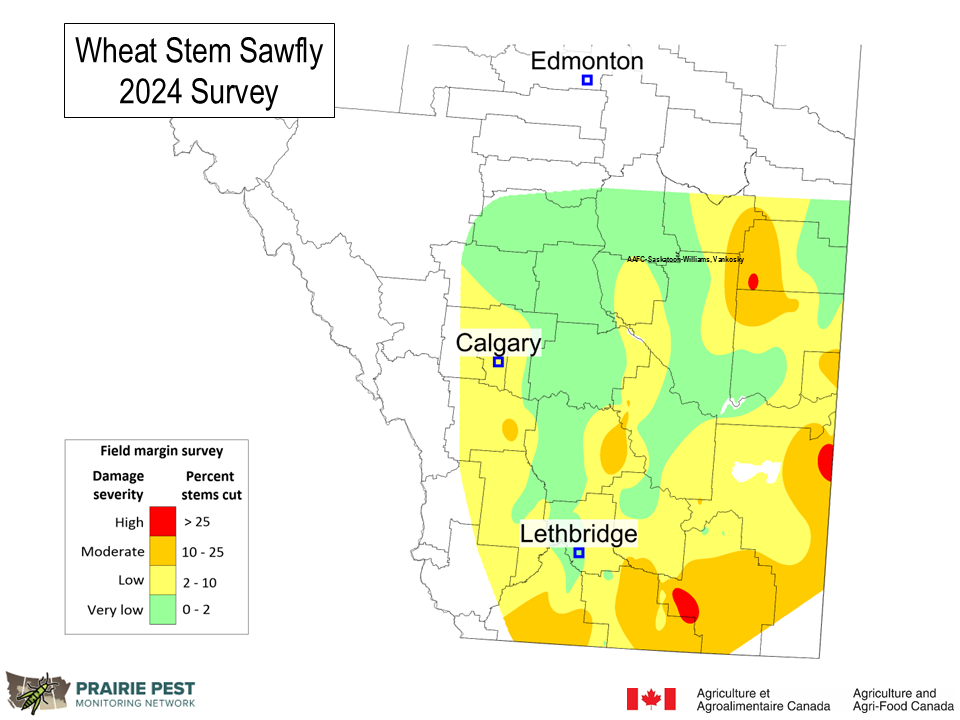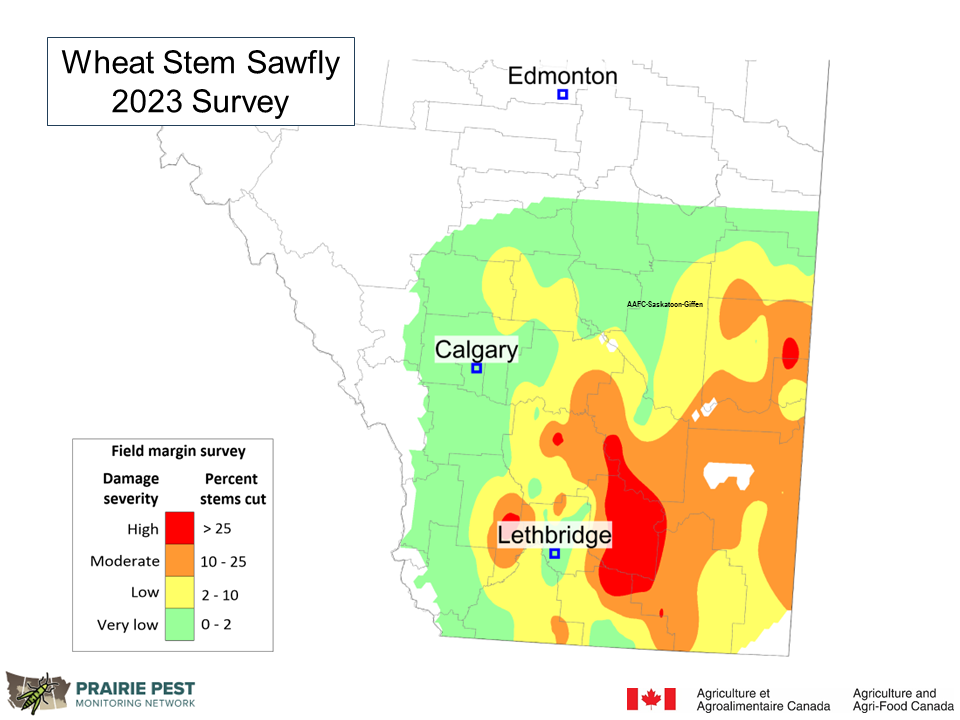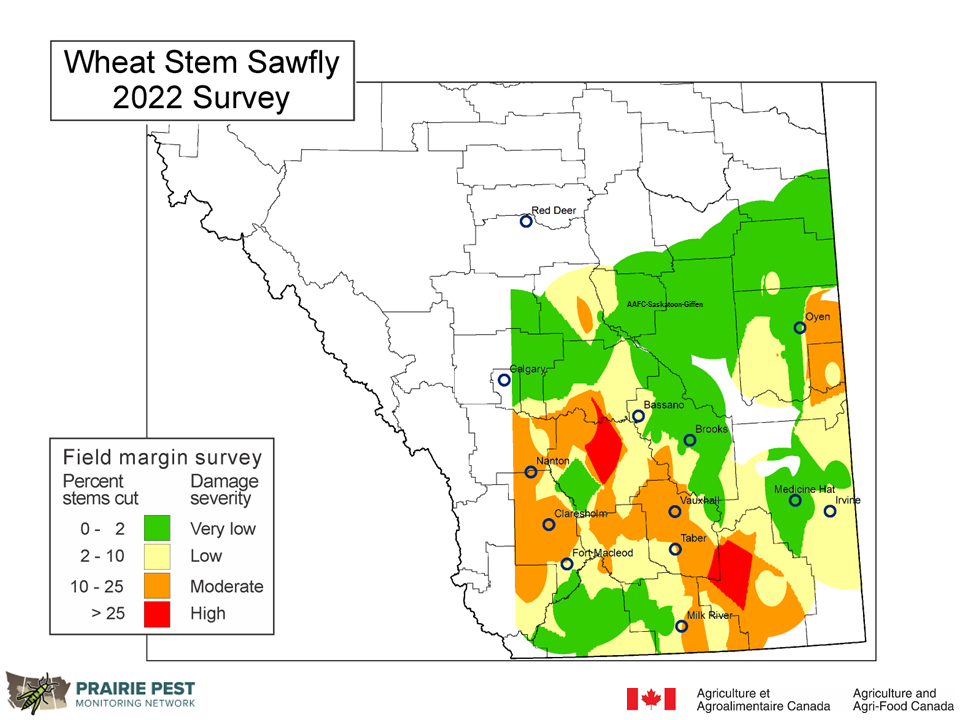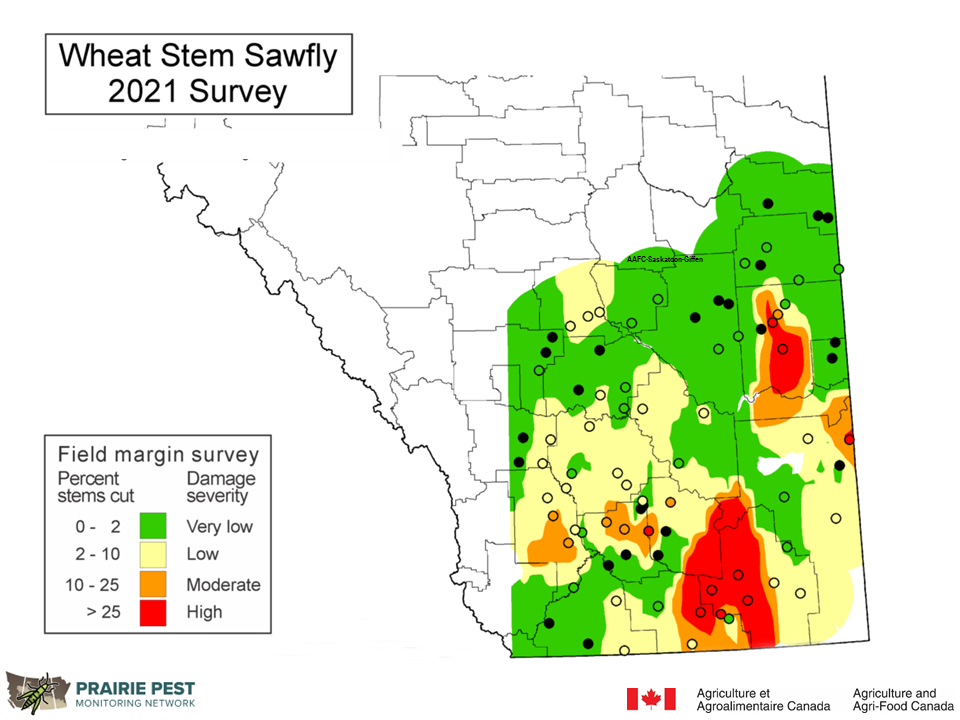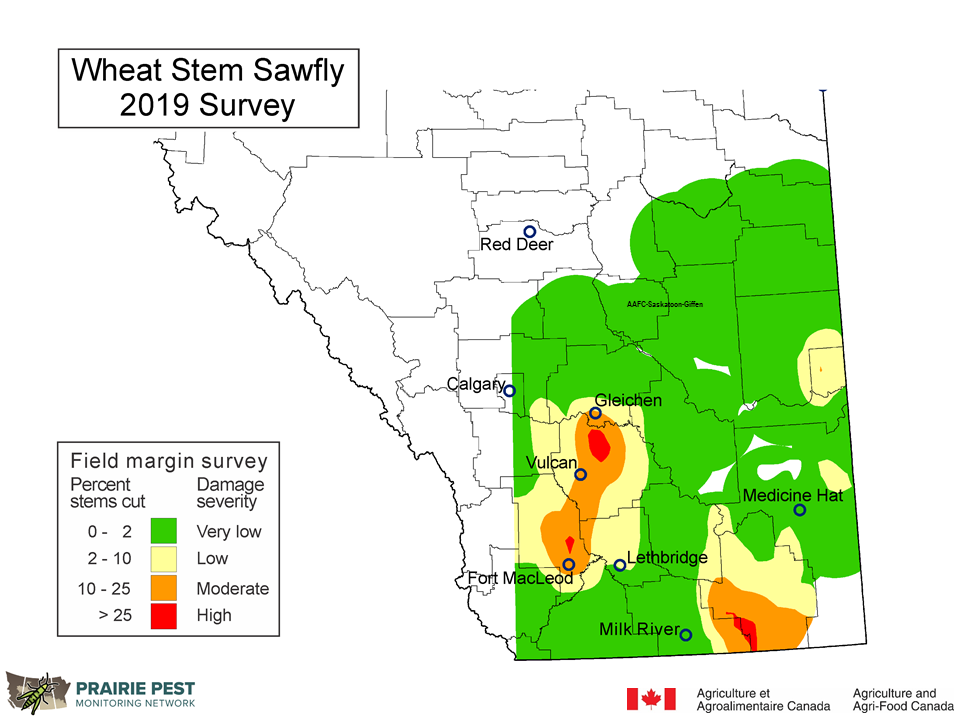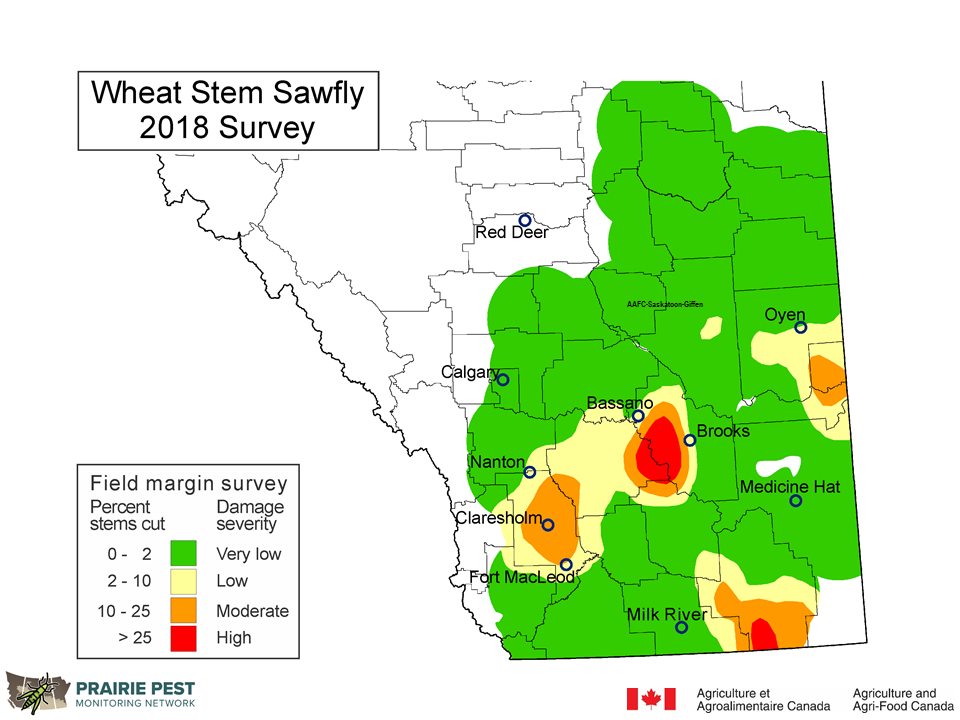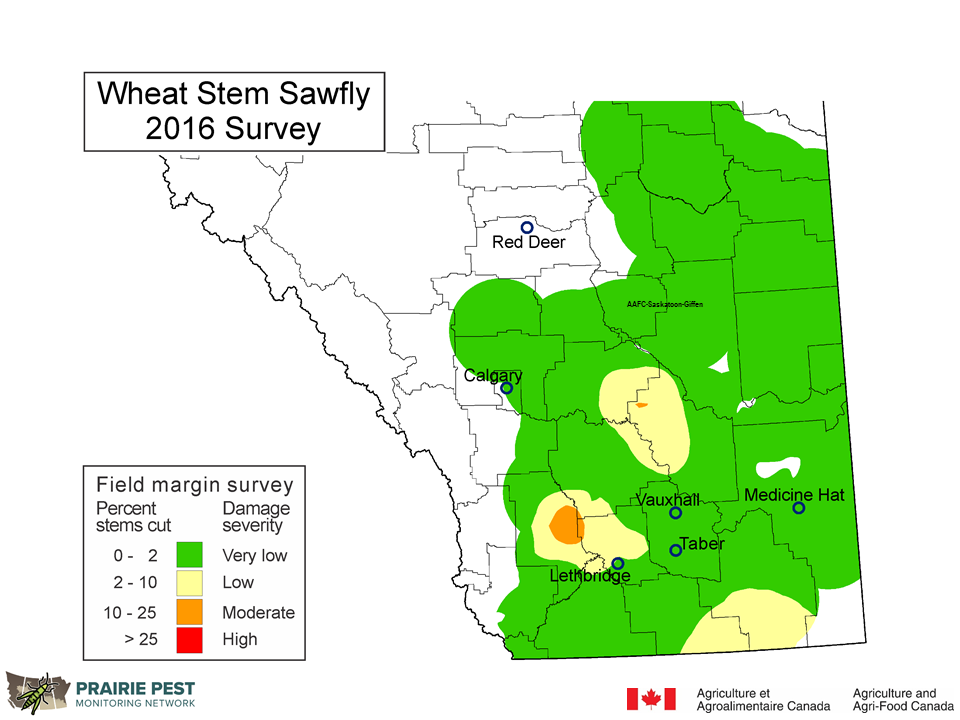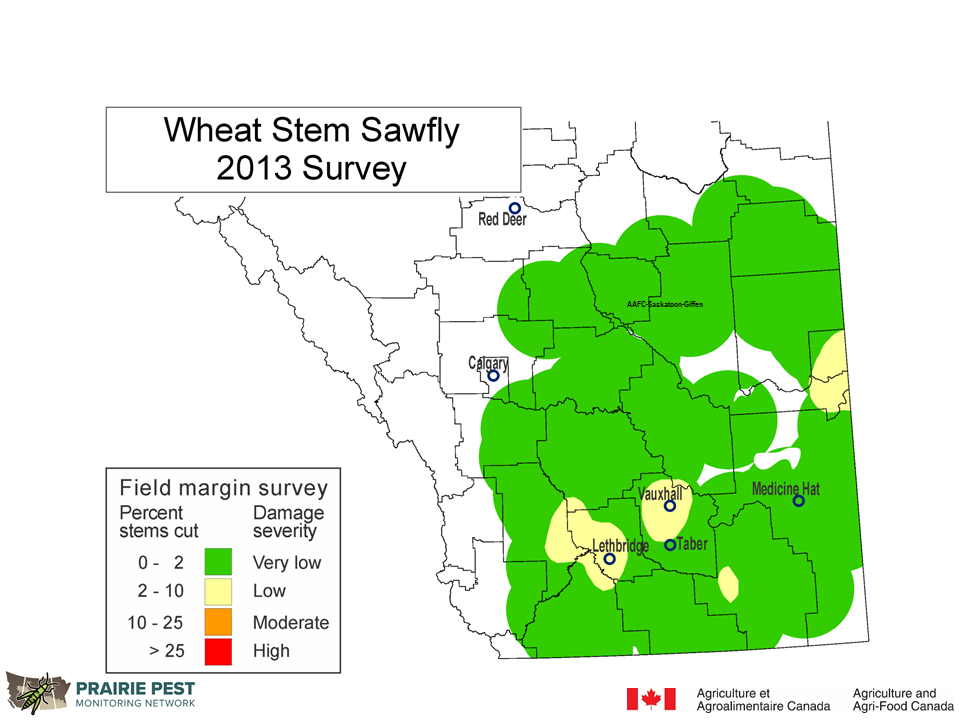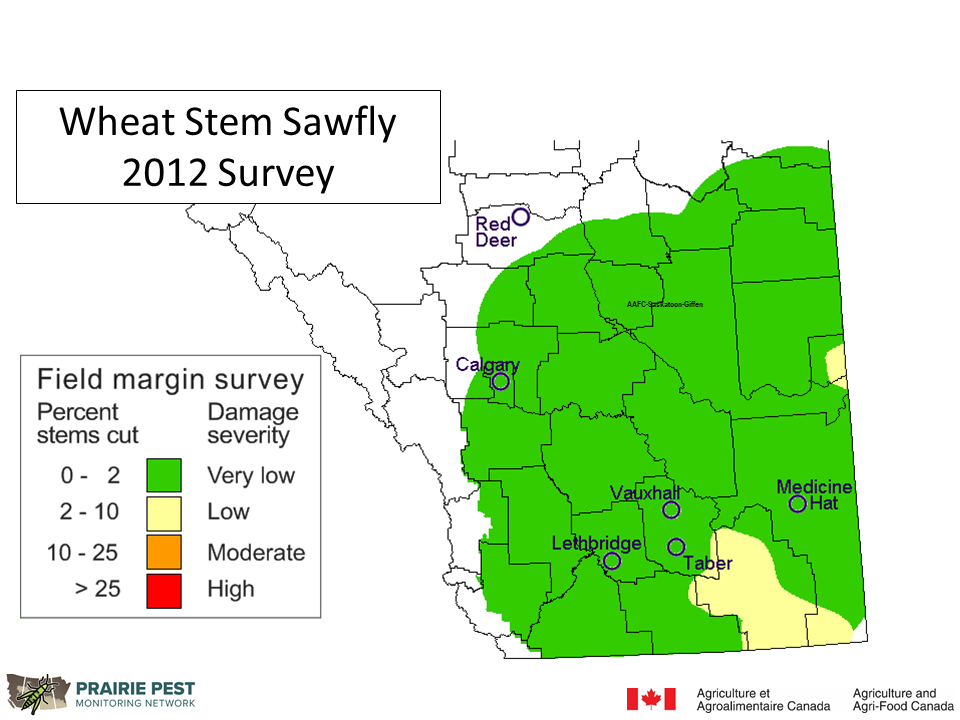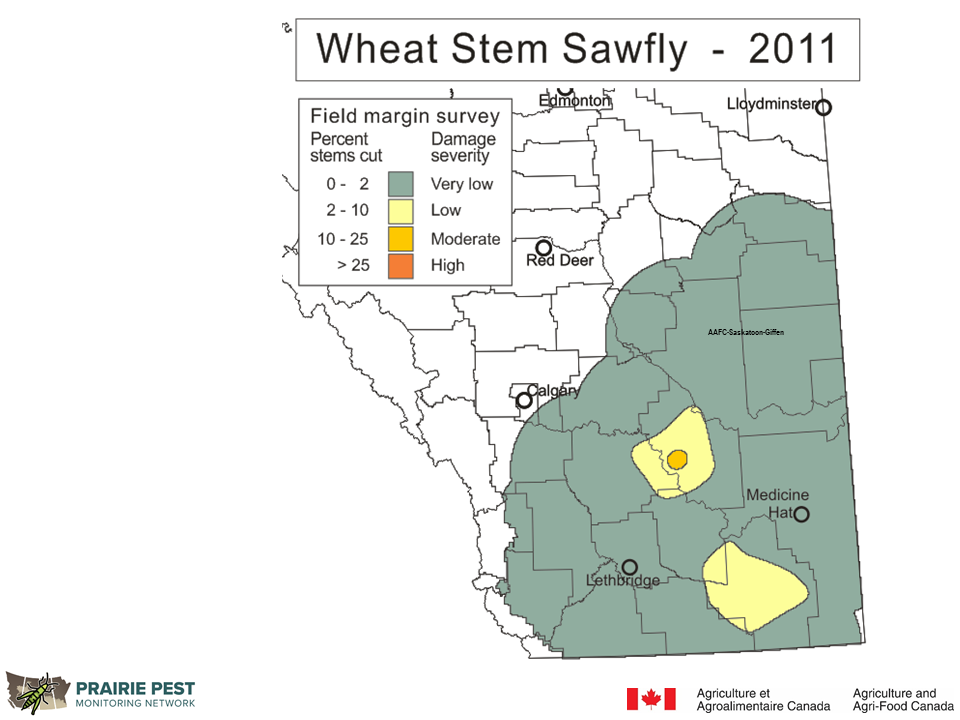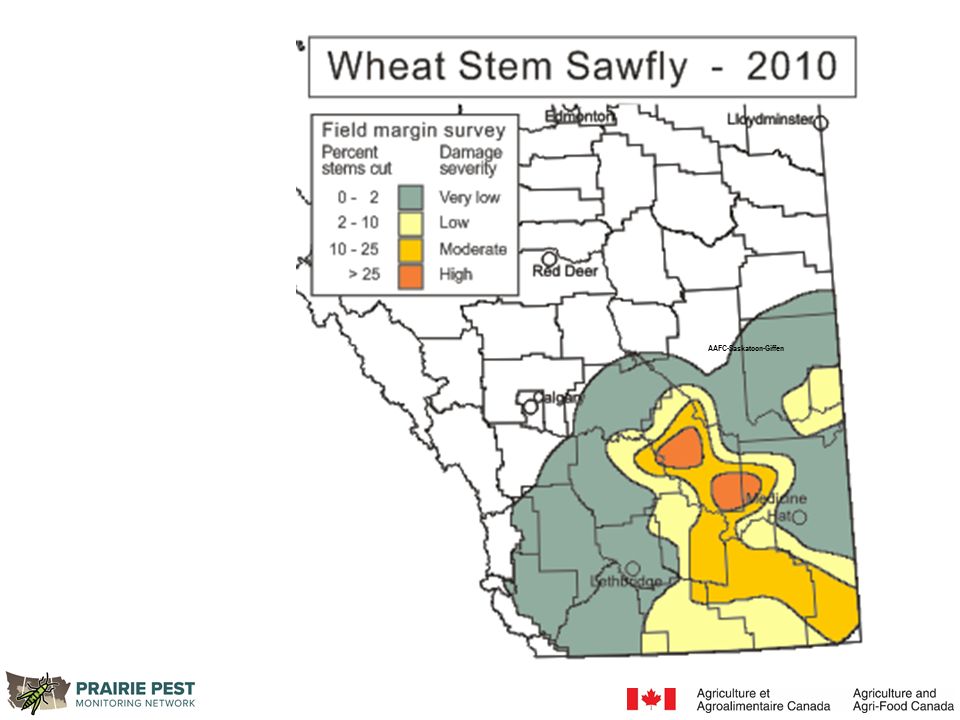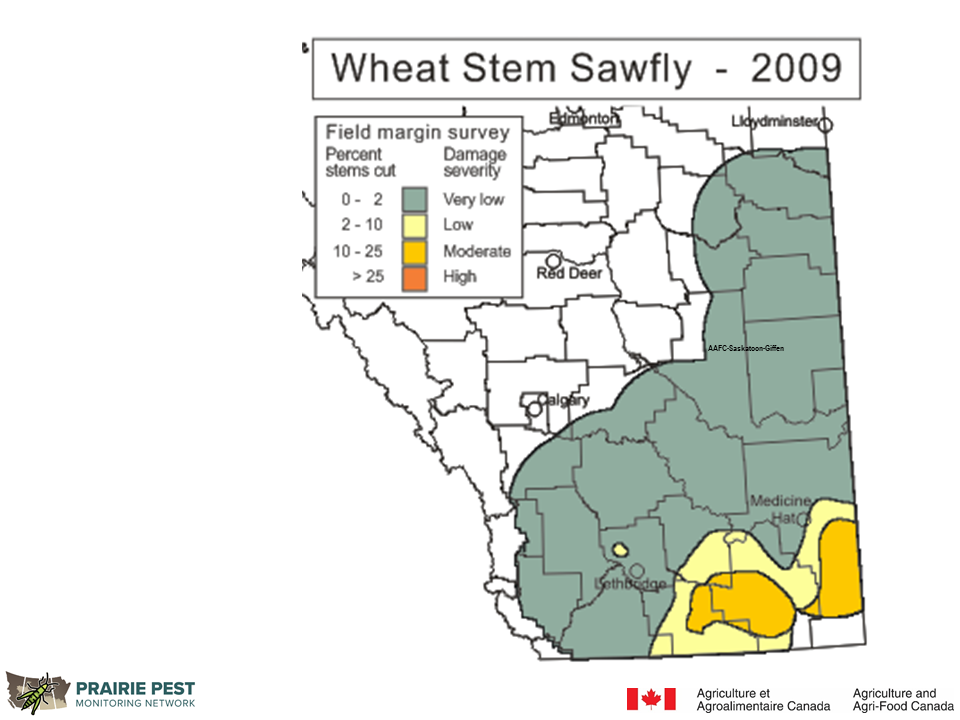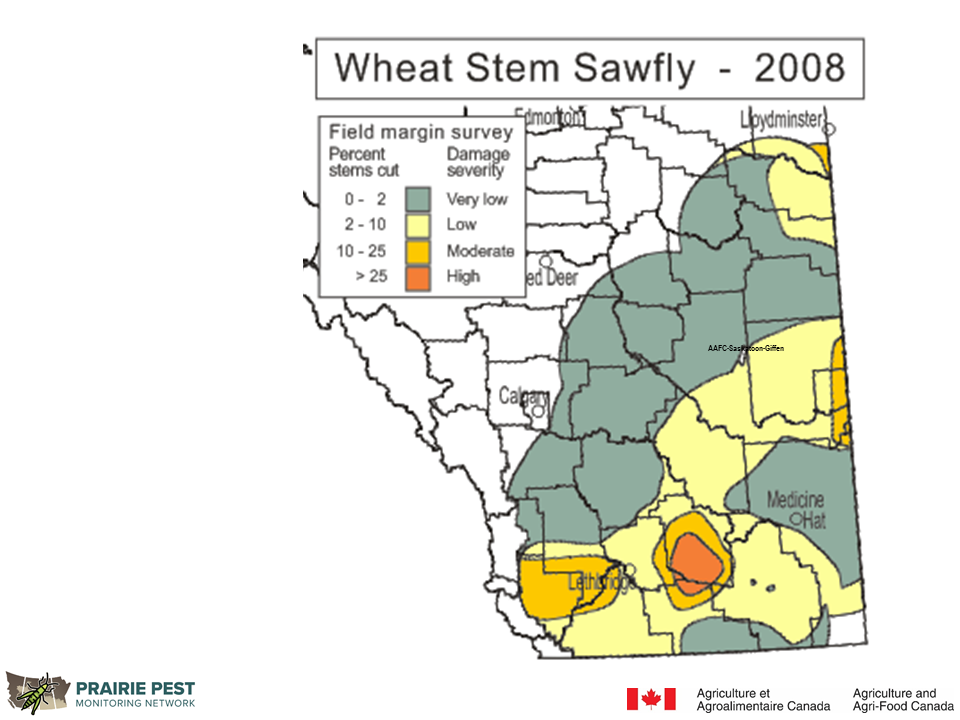Wheat stem sawfly is an economic pest affecting spring wheat and rye although the species also utilizes several species of grasses as a host. Larval feeding within the stem and girdling behaviour cause economic levels of damage in spring wheat and rye. Densities and the number of adult females are assessed during the mating and oviposition period using a sweep-net. Adult wheat stem sawflies emerge in June and males emerge earlier than females. Adult wheat stem sawflies have a habit of resting on stems with heads downward.
The maps featured below are based on pre-harvest in-field assessments of wheat stem sawfly damage measured using percent stems “cut”. The number of cut stems per square metre is assessed to support future management decisions including field crop rotation or wheat cultivar selection. Stems containing sawfly larvae usually develop a reddish-brown band below either the second or third node.
Access the full field monitoring protocol for wheat stem sawfly.

